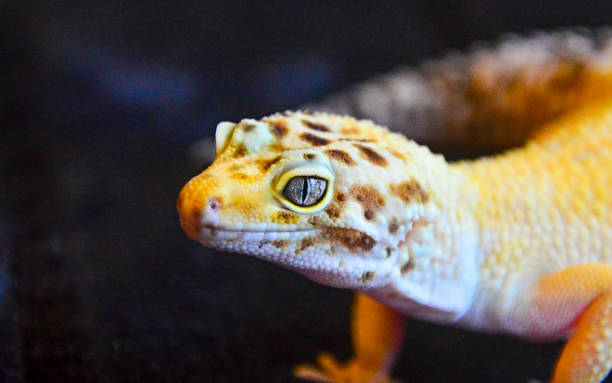Colours vary significantly among leopard geckos, and each one is unique. You may have wondered, “Why Is My Leopard Gecko Pale?” Is this normal, and if so, should you be alarmed? This article will explain why leopard geckos become pale yet do not shed, ranging from environmental concerns to diseases.
My Leopard Gecko Is Pale; why?
It’s essential to watch your leopard gecko see if there are any signs of illness. One of these is preoccupied with how it looks. If your leopard gecko’s skin becomes pale, don’t panic. Most geckos go through a similar cycle of shed old skin to show new, healthy skin underneath.
Protecting the leopard gecko’s skin and keeping it from drying out is a rough coating of scales on the animal’s skin. Eventually, the gecko outgrows these scales, so a layer of scales forms below. The leopard gecko will be able to develop safely in these new scales.
A leopard gecko will appear pale before losing its old skin, signifying that the old scales have separated and are ready to fall off. Before the gecko begins to lose its skin, this occurs typically. To keep up with the rapid growth of their bodies, young leopard geckos lose their skin once a month.
The shedding process slows down as geckos become older since their bodies don’t expand as quickly. Consequently, they may seem pallid every few months or so as a new covering of scales begins to emerge.
Stuck Leopard Gecko: What Should You Do?
Occasionally, your gecko’s tailor toes may be covered with bits of their old skin. The process is a natural one, but it also uses up a lot of your pet’s energy. If your lizard’s toes are covered with additional shed, carefully peel the skin off their toes with your assistance.
If your gecko’s toes have extra skin surrounding them, this might reduce the blood supply to the toes. The reduced blood supply may even result in the loss of toes in your gecko. The shed must be removed immediately.
The best technique to remove this skin is to peel it away carefully.
Remember that gentle is the keyword. On the other hand, the shed might become stuck from time to time. To loosen the shed, your gecko’s toes will benefit from a quick soak in a warm, shallow bath.
It is possible to remove lost skin using cotton swabs and a gentle rubbing motion. Once again, you must be very careful while attempting to remove the shed from your gecko’s skin, or you might injure it.When leopard geckos shed, they lose some of their vivid colours for several days. Is it, therefore, a reason for alarm? Most reptiles naturally lose their skin. Thus this isn’t true.
When your gecko is shedding its skin, you may encourage them by doing a few simple steps. It is ideal for geckos somewhere wet and dark where they can shed the old skin with minimum effort. You may help your gecko’s sloughing process by providing it with the right amount of moisture and humidity.
Last update on 2022-10-09 / Affiliate links / Images from Amazon Product Advertising API
#
Preview
Product
Rating
1

Zilla Shed-Ease Reptile Bath Treatment for Pet Lizards and Snakes, 8-Ounce, Blacks & Grays35
1,925 Reviews
Buy on Amazon
2

Zoo Med Repti Shedding Aid, 64 ml35
787 Reviews
Buy on Amazon
If you’d like to leave your pet alone, you may do so as long as you keep an eye out for any stray hairs that could be stuck to their tails or toes. If you see flaky skin on your gecko’s toes, you should try to remove it carefully yourself or seek the assistance of a veterinarian who can.
Why Is My Leopard Gecko Pale – I hope i have covered all the details.
